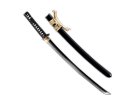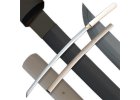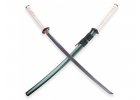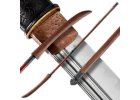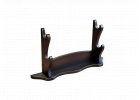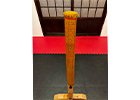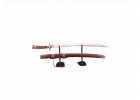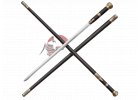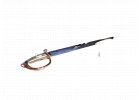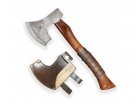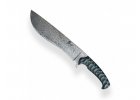Hamon is the name for decorative strips or patterns on the blade of Japanese knives and swords, such as katanas. This technique creates contrasting lines on the blade of the sword and is one of the distinctive elements of Japanese swordsmanship. Hamon is the result of the differential hardening process of the blade. Differential hardening is a technique that involves cooling different parts of the blade differently, creating different hardness and flexibility. This is achieved by covering the blade with a layer of clay with precisely defined shapes. The blade is then heated to a high temperature and quickly cooled. As a result of different cooling, different steel structures are formed in different parts of the blade. Hamon is then a visible consequence of this differentiation in the steel structure. The shape and pattern of hamon is influenced by many factors, including steel composition, clay composition, tempering temperature and time, as well as grinding and polishing techniques after quenching. Each hamon is unique and can be interpreted as the "soul" of the sword. In addition to the aesthetic effect, the hamon also has a functional purpose, providing strength where necessary and securing the edge of the sword. Hamon is thus one of the main elements that makes Japanese swords such as katana such unique and valued works of art.
Login to your account
Your cart is currently empty.
If you do not know how to choose, do not hesitate to contact us. Our specialists will advise you.
Customer support:702 049 048info@dellinger.cz
More
- Akční nabídka
- Katanas, Japanese fighting knives and swords
- Sabres and Swords
- Hunting and pocket knives

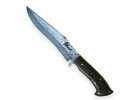
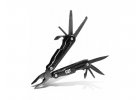

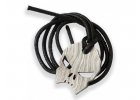
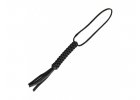
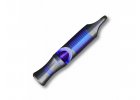
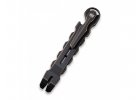
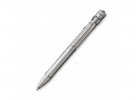
 Blade material
Blade material- Damascus carbon steel,
- Steel SKD11,
- M390 Bohler Microclean,
- Bohler N690 Stainless Steel,
- VG-10 Japanese steel,
- Carbon steel 14,260,
- 8Cr13MoV a 8CR14MoV,
- D2 steel,
- 9Cr18MoV,
- Steel 10Cr15CoMoV,
- Steel Nitro-V,
- steel CPM 20CV,
- Steel CPM S35VN,
- Steel CPM S90V,
- Blue Steel - Japanese steel,
- damascus steel - Stainless,
- Steel Sandvik 14C28N,
- 6AL4V titanium alloy,
- SK-5 Japanese steel,
- Stainless steel AUS-8,
- powder coated steel RWL-34,
- Steel 154CM (440C),
- India Wootz steel,
- DC53 steel,
- 6Cr - 6Cr13 Steel,
- 3Cr13 Steel
- Axes, hammers + machetes
- Exclusive and Limited Editions
- Bazaar - Outlet
- Yakuza PREMIUM clothes
- Reklamní předměty - merchandise
- Services
- Cold weapons Noze a katany
- Contacts shop
- Stores
- Brands
Používáme cookies, abychom Vám umožnili pohodlné prohlížení webu a díky analýze provozu webu neustále zlepšovali jeho funkce, výkon a použitelnost. Více informací

_-_edited.png)
